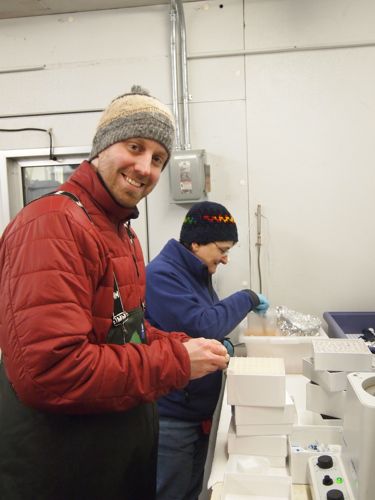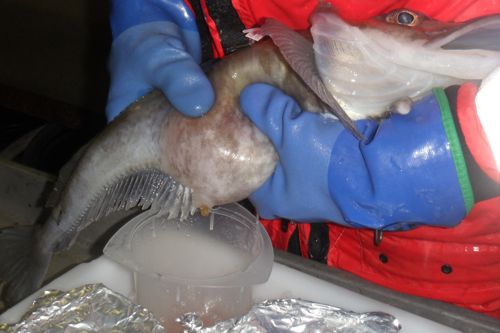First my apologies for the sporadic entries; the Internet on the high seas is sporadic. I mean, if you think about it, I'm lucky to be able to post any thing at all from the middle of the Drake PassageStrait, connecting the Atlantic and Pacific oceans between Tierra del Fuego and the South Shetland Islands. Located about 100 mi (160 km) north of the Antarctic Peninsula, it is 600 mi (1,000 km) wide.! Really - have you looked at a map lately? Luckily we have had unbelievably smooth sailing across what is considered one of the most turbulent sea ways on the planet. Our smooth sailing has a name - Drake Lake. And while that is great, I have to admit I thought it would be kind of cool to see some of those huge swells that I hear so much about. But as they say - be careful what you wish for, it might come true. The other side of those stories is falling out of bed as the ship rocks from side to side violently or watching waves sweep higher than the ship which must be a little disconcerting. So we are having a pleasant sail. We have officially left Antarctica - above 60 degrees South. It's bitter sweet. This expedition has been spectacular and I loved the feedback I got from so many of you. Keep the questions coming. We are not done yet. No sir-eee. We have some more science to discuss. So let's start with Jeff Grimm who was previously a grad student with Lisa Crockett and is now working with H. William Detrich on the skeletal structure of the Notothenioids (remember our friends the coriiceps?) and the icefishes.

First a question for you - what is the difference between bone and cartilage? Both are connective tissue in your body. Feel your nose...now your ears. That is cartilage. Knock on your head. Any echos? That could be a problem, but your head is bone. The Notothenioids have evolved less ossified and more cartilaginous skeletel structures. Okay, context. 55 million years ago (mya) South America and Antarctica separate. The Drake PassageStrait, connecting the Atlantic and Pacific oceans between Tierra del Fuego and the South Shetland Islands. Located about 100 mi (160 km) north of the Antarctic Peninsula, it is 600 mi (1,000 km) wide. opens (hey, that's where I am right now) and sets the stage for a circumpolar current. CircumpolarLocated or found within the Earth’s polar regions. meaning a current is circulating the around the polar region and as a result the Southern Ocean is thermally isolated. Remember, when we say thermal we are talking temperature. That was about 40 mya. Time flies, huh? Just a mere 10-14 mya the Southern Ocean cools to below 5 degrees C. (I thought it felt chilly when I went for that swim). And now, as you may already know from my webinar, these waters are well-oxygenated and thermally stable ranging from -1.9 to +1.5 C.

It's going to get a little trickier now. Imagine a continent and the ocean coast. If you were to look underwater, you would see a long continental shelf that stretches out and is about 130 meters deep. Then you have the continental slope, the continental rise, and finally the ocean floor. There are lots of fish and other marine animals in the waters above the continental shelf. BUT, unlike the other continents, the Antarctica is a bit different because of the iceshelf between the land and the open water, meaning that the depth is much deeper at the point that animals can occupy. Like the icefishes, the Nototheniods don't have swim bladders that allow the fish to regulate their buoyancy. Where are we going with this?
Bone is more dense than cartilage. No swim bladder means the fish has to work harder to move up the water column. Any idea where this is going? What type of skeletal structure do you think coriiceps have? If you are think cartilage you are CORRECT! They are experimenting with in vitro fertilization and looking at the development of bone cells and cartilage in these fish. In vitro as in collecting sperm from male fish, eggs from female fish and fertilizing the eggs in a petri dish and growing them. Then you can examine the eggs at all stages of development.


I helped Jeff collect eggs from a female C. aceratus, an icefish, and then took 600 eggs, yes I said 600, and placed a single egg in a vial to examine later. Yes, 600 vials. We had to do this in the cold room to keep the eggs preserved as we took them out of the beaker. Brrrrrrr.
So, before I sign off - I want to remind you that while I will be writing entries each day they may be a day or two in between postings so be patient. I have a journal on bacteria in waters here and OF COURSE, some results from our work on thermal tolerance in the icefishes and where we will be going next with that.


Comments